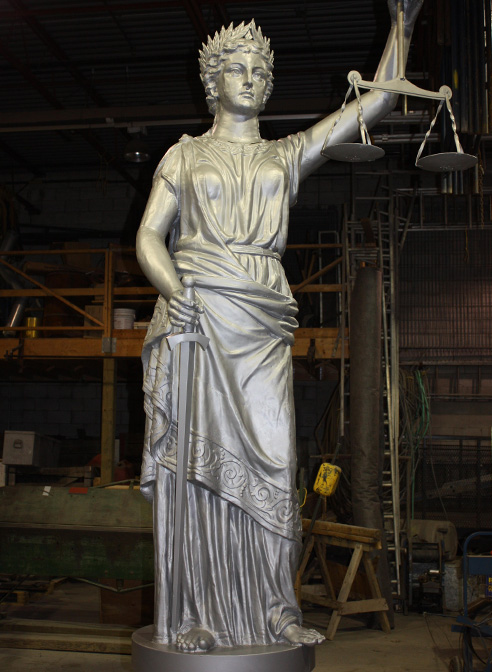
Supreme Access Bot
ForceCop | The Best Supreme Bot | Professional & Complete
Worldwide Support
ForceCop supports every single Supreme store. This includes the United States, Europe, and Japan.
Instant Download
ForceCop is available immediately after purchase. You will be able to install the bot, access your personal dashboard, and prepare for the next drop within seconds.
Mac / Windows Support
ForceCop supports OSX, Windows, and Linux. You will simply need to use Google Chrome to be able to run the bot on any platform you desire.
Customer Support
ForceCop offers top-notch customer support, giving you the ability to contact our professionals at any time of day.
1
2
3
Smart Dashboard
Because all our software is engineered by committed professionals, everything looks and feels incredibly fluid. A central feature of our Supreme Bot is the personal dashboard which is assigned to each ForceCop user. It allows you to control the backend of your bot, and manage it intuitively and securely without having to rely on anyone else!
Proxy Integration (PRO)
A unique feature of our Supreme Bot is the multiple proxy integration option it provides. The implementation of this feature allows our users to increase the chances of securing their items, while simultaneously giving them an edge over the competition.
Advanced Keyword Search (PRO)
We have taken a lot of time to perfect the keyword search mechanism of our bot, and currently boast the most advanced tool of this kind. It’s lightning fast, intuitive to use, and extremely adaptable.
Quality Customer Care
You, the customer, are our #1 priority! We make sure to get every issue resolved in a timely manner! Easy contact, fast response.
Constant Updates
Our team constantly monitors Supreme’s website, and updates ForceCop whenever it notices a potential opportunity at improvement.
Trusted By The Community
ForceCop is the number one Supreme Bot. Programmed and managed by full-time professionals who care about the user.
By far the most professional bot on the market. A great product and the most helpful support team. If you are just starting out, or want to make sure that you succeed, this bot is for you!
The best investment I’ve ever made hands down. Since I began using it, I have yet to miss on a single drop, and made my money back in one Thursday.
A lot better than expected. Before this bot I spent hundreds of dollars on other programs but none had the same results as ForceCop.
Follow Us
If you have a Twitter account feel free to send us a direct message and one of our support agents will be able to assist you.
Email Support
Have a technical question? Require additional information? Contact us via email and we’ll get back to you as soon as possible.
Presale Question
Unsure of what features the bot has? Don’t know how to purchase? Our expert staff will be able to assist you momentarily.

The Botmakers Who Rule the Obsessive World of Streetwear
Early on a steamy June morning in Plantation, Florida, Matt Steiner sits working at his parents’ 10-person dining room table. It’s the start of summer vacation, and he is joined by his buddy Chris, who is freshly home from his first year at college. Between yawns the two send tweets and check emails, but mostly they wait for 9 am. That’s when the pair will open access to their website for 60 minutes, just as they do every Thursday. During that hour, and that hour only, people can buy the use of Matt and Chris’ web nally the time comes. Within one minute, 10 orders have rolled in. By 9:04, that number has doubled. People are browsing the site from the UK, South Korea, Hong Kong, looking at images of limited-edition products. If they’re interested, they enter their address and payment information. If they want a hat, it’ll cost $10. For a T-shirt it’s $15. Hoodies are $20. To be clear, these aren’t prices for the shirts, hats, and hoodies; they’re the prices would-be shoppers pay to have a shot at buying the damn things when the apparel brand Supreme opens its own website and stores at 11 than 1, 200 miles up the coast, in downtown Manhattan, people—mostly guys—are lined up outside Supreme’s NYC store for the same reason others are clicking on Matt and Chris’ website: to get their hands on gear. On the Supreme subreddit, photos are filtering in from shoppers who already got lucky in London and Paris, providing a valuable preview of what’s to 9:55, Matt and Chris are closing in on 10, 000 visitors to their site. The problem is, on this Thursday their customers aren’t spending much money. Supreme releases only a handful of its seasonal collection each week, and this week’s drop isn’t a great one. The guys were hoping that the long-promised Everlast boxing bag would come out today, or at least the $200 basketball, covered with butterflies, designed by skating legend Mark Gonzales. Instead, the core of the drop is a series of T-shirts made in collaboration with a Jamaican musician from the ’80s. Most “hypebeasts”—the largely teenage and twentysomething consumers who obsess over streetwear and sneaker brands—are too young to know the dancehall stylings of Barrington Levy. By the time Matt and Chris shut down their site to finalize details before the Supreme drop officially starts, they’ve topped out at 38 orders. “All right, it’s 10:59, ” Chris announces, hovering between his two computers. Matt stands behind him, phone in hand, watching over Chris’ shoulder and nervously bouncing from foot to precisely 11 am, their bot connects to Supreme’s servers, armed with all 38 customers’ shopping lists and credit card numbers, and efficiently completes the checkout process. It easily outpaces online shoppers who are trying to click through Supreme’s byzantine website, type in their billing information one keystroke at a time, and place orders before everything sells out—which it almost always, who didn’t want to reveal his last name, clicks over to a Gmail tab and checks his outbox. There are 38 newly sent messages, one automatically created for each person whose order was successfully filled. Completing them all took 19 guys in Matt’s bedroom before a drop, surrounded by (and clad in) the spoils of bot warfare.
Ysa PérezMatt and Chris first built their ecommerce bot in 2015, when they realized that their shared Supreme obsession was a business opportunity in disguise. The breakthrough came within a couple of months, when Supreme released a version of Nike’s Air Jordan 5 sneakers. The shoes were offered in three color options, what sneaker fans call colorways: white, black, and desert camo. That day Matt and Chris charged $100 for each pair a customer wanted to buy. One of the colors received around 200 orders, making the duo roughly $20, 000 in five seconds. Chris and Matt won’t say how much they make from their bot, the Supreme Saint, but they’ve formed an you have no idea why someone would pay $100 just to get a crack at spending another $200 on a pair of sneakers, that’s OK: Supreme isn’t meant for you anyway. Since its launch in 1994, the company has turned conventional consumerism on its head and formed a cultlike fandom in the process. Its first store, still the flagship location, opened on the edge of Manhattan’s SoHo neighborhood back when the concept of streetwear was practically unheard of. Through the store’s very design, founding owner James Jebbia communicated to the shopper that Supreme was a skate shop, one meant just for skaters, who would often loiter around all day. The loftlike space lacked tables or shelving in the center of the store, so people could skate right in. Shop clerks were notoriously obnoxious and wouldn’t let you touch the clothes if you didn’t fit the right profile. The music, usually heavy metal or aggressive New York hip hop, played too loudly over the speakers. It was intentionally premely RandomWhen Supreme released a $30 logo-stamped brick in August 2016—yes, a standard red brick—it sold out in minutes and went on to fetch $1, 000 on eBay. It wasn’t the first time the brand released bizarre, possibly consumer-trolling accessories. Whether with its own products or seemingly random collaborations with other companies, Supreme has proved again and again that fans will buy anything with that famous logo. —Lexi PandellAccessoriesCrowbar: $32Sand timer: $24Air horn: $20CollaborationsSupreme x MTA MetroCard (preloaded with two fares): $5. 50Supreme x Vibram FiveFingers: $125Supreme x Kidde fire extinguisher: $60Over the years, that attitude endured. Supreme intentionally releases every product in limited quantities to ensure sellouts, so people have to work to get it—and once gone, almost no product is ever available from the store again. The average Supreme T-shirt is nearly impossible to buy. But, of course, it’s not just T-shirts; it’s keychains, Mophie battery packs, New York City MetroCards, ramen noodle bowls, sleeping bags, even 18-inch steel crowbars with “Shit happens” etched on the handle. All of it snapped up a Supreme product comes out, there are only three ways to get it before it hits the resale market: the company’s stores, of which there are 10; the web shop, which was started in 2006; and a high-end boutique called Dover Street Market with outlets in London, New York, Beijing, Singapore, and Tokyo. So if you don’t want to pay a huge premium to resellers on eBay and consignment sites (where those Supreme Jordan 5s routinely go for $450 or more), your best bet is an automated bot. Yes, you’re still paying more than the retail price, but it’s usually cheaper than eBaying gear after the fact, and it doesn’t pass through someone else before you get ’ve probably seen Supreme clothes, though you may not have given them much thought. They have a consistent utilitarian aesthetic: The brand’s logo looks like nothing more than a red rectangle with Supreme written in white Futura font inside it. But there’s some semiotics at play. Hip hop’s sampling ethos runs in streetwear’s veins, and designers have long appropriated others’ logos and symbols to make new work. In Supreme’s case, that red logo is a reference to a series of pieces by conceptual artist Barbara Kruger, who had emblazoned a paper shopping bag with a red box reading, in white Futura, “I shop therefore I am. ” (When Kruger was made aware of the Supreme logo years later, she responded, “What a ridiculous clusterfuck of totally uncool jokers. ”) In 2004, Supreme celebrated its 10th anniversary with a T-shirt that featured a photo of model Kate Moss from an early-’90s Calvin Klein campaign, and slapped a Supreme logo on it. Then, in 2012, the company went full ouroboros, releasing a T-shirt depicting Kate Moss wearing a Supreme T-shirt. These connections have become the basis of an Instagram account, countless Reddit posts, and even a navigates the Supreme site on his laptop.
Ysa PérezThat in-on-the-joke mentality, as well as the clannish nature of streetwear cool, has created a decades-long frenzy surrounding Supreme’s weekly releases. Traditionally, lines would crawl two blocks out from the New York flagship store on Wednesday afternoon to secure Thursday-morning releases. (“That’s the Apple Store, ” I once overheard one oblivious tourist tell another as they walked by on drop-day eve. ) Recently, though, to appease its SoHo neighbors, Supreme organized a ticketing process: People show up to a designated park, where security guards hand out a limited number of entry tickets. The parks too have become mob the trials of in-store shopping seem minor compared with those of the web drops. The ecommerce homepage of Supreme’s website is simply a series of narrow rectangular photos showing colors and patterns. Clicking on one takes you to the item from which said photo is a sample. Click on a picture of Emiliano Zapata, say, and up comes a $188 quilted work jacket. Back out a page in your browser, click on another rectangle, and you see a $278 lavender anorak. All of it is invariably sold out. After a few minutes of that tedium you might glance down and notice, in teeny-tiny, light-gray type at the bottom of the page, a link that says View All. The site’s design hasn’t changed since it launched in ’s intentional. When the company first considered its ecommerce site, Jebbia wanted it to remain elusive and on brand. So he decided that new releases would go online only on Thursdays, and only at 11 am. (Jebbia ignored multiple interview requests for this story. ) With that he created a culture; the customers knew when to come back, over and over again, and they understood that they would find something new every time. Scarcity and consistency drove the market, even the website launched, it was still mostly skaters who knew about Supreme. But as streetwear became popular with other subcultures, the brand’s reputation grew. When the rap group Odd Future emerged from Los Angeles around 2010, captivating millennial listeners while rapping about rape and using every slur they could fit between 16 bars, the whole crew—Earl Sweatshirt, Left Brain, even Tyler, the Creator—seemed to wear nothing but Supreme. Meanwhile, Supreme had been partnering with a growing array of other brands, and each unexpected “collab” seduced new shoppers. Over the years, the Supreme logo appeared on limited-edition Everlast boxing gloves, Umbro soccer jerseys, North Face winter the early 2010s, Supreme was the most popular streetwear brand on the planet. Then, in the spring of 2014, the company announced a collaboration with Nike on a basketball sneaker called the Foamposite. Supreme had collaborated with sneaker companies for years, but Foamposites were especially prized by sneakerheads. All of a sudden, Supreme had a whole new audience—one already accustomed to limited releases and camping out to get them. The shoe was to be released on April 3. But by 7 pm the night before, more than 3, 000 people had swarmed the SoHo shop, forming a line three and a half blocks long, spilling out onto the street, and forcing the police to shut down the drop before the store even opened. That’s when Supreme made a decision: The next time it released something with that much hype, it would happen online next time was the drop of the Supreme Air Jordan 5. Before the shoe’s release, Supreme spent months optimizing the site’s ecommerce framework so that it wouldn’t falter under the combined load of hundreds of thousands of sneakerheads and Supreme obsessives alike. It never crashed. A line forms down NYC’s Lafayette Street in anticipation of a Supreme drop in February 2017.
Andrew WhiteIt was the sneaker world that also, unsurprisingly, gave rise to shopping bots. In 2012, Nike released a shoe called the Air Jordan Doernbecher 9. It’s a curvy white high-top with a trim that looks like wheat stalks. (They’re actually hand-painted chicken feathers. ) It was designed—well, “curated”—by an 11-year-old named Oswaldo Jimenez, a patient at the Doernbecher Children’s Hospital in Portland, Oregon, which had started collaborating with Nike on a series of Jordans to raise money for the the release of the shoe, Nike used a technique it had started experimenting with: The company would fire off a tweet to announce when the shoe was available. To reserve a pair, you’d have to direct-message back via Twitter with your name and size, essentially sending an RSVP to make a purchase. Several tech-savvy sneakerheads wrote scripts that would scan Twitter API streams for keywords like “Doernbecher” and “RSVP now” and then automatically reply as soon as the tweet went effect was clear as soon as the tweet went out. “It was impossible to get those shoes just by clicking, ” says an Illinois-based, college-age software developer who later created a bot called Heated Sneaks. __ __Some fans realized the Doernbechers hadn’t just sold out quickly—they’d sold out unnaturally chemy Omoregie, a 32-year-old electrical engineer who lives in Houston and owns around 250 pairs of sneakers, struck out on the Doernbecher. So to guarantee that he’d be successful the next time, he designed his own version of the auto-replying Twitter bot. “You could send hundreds of DMs in a tenth of a second, ” he says of the technology. He wasn’t the first to build a bot, but he did expand the idea: He branded the bot and let other people use a desktop version of it for a fee. After all, non-engineers wanted a chance to get sneakers too. He named his tool RSVP Sniper and, in February 2013, started selling word about the bots spread across forums, more computer-savvy sneakerheads jumped in. In 2014, a sneaker fan created Another Nike Bot. The New Jersey–based Better Nike Bot opened shop soon after. Then came EasyCop Bot, built by a teenager in Connecticut. Botmakers also began collaborating on work-arounds when sneaker companies redesigned their sites or changed their checkout procedures. All the botmakers started with Nike but, pretty soon, with Supreme being so elusive, everyone was going after it too. A Supreme fan peers into a storefront in Manhattan.
Andrew WhiteBots aimed at Supreme gear come in two varieties. One is a simpler add-to-cart service, like the Supreme Saint. Matt and Chris maintain the bot on their own server and mete out access to it. This kind of bot is essentially a web utility: The buyer picks a product and supplies payment and shipping information, and the bot does the buying at a predetermined time. The Supreme Saint bot can buy only one of each product at a time for simplicity and speed. For regular shoppers who are just looking to get, say, a Supreme throw pillow printed with the cover of the Geto Boys’ 1991 album, We Can’t Be Stopped, that works just InflationWhen they first drop, most of Supreme’s popular pieces don’t cost much more than a videogame—but obsessives who strike out will spend big bucks on the secondary market to snag the company’s coveted hypebeast staples. —L. P. 2016Box logo hooded sweatshirt, blackRetail: $148Resale: $800201420th-anniversary box logo T-shirtRetail: $32Resale: $7002004Kate Moss 10th-anniversary logo T-shirtRetail: $32Resale: $6002002Supreme x Nike Dunk Low Pro SBRetail: $65Resale: $1, 5002000Supreme LV monogrammed skate deck (recalled)Retail: N/AResale: $3, 500With a downloadable app-based bot like EasyCop Bot, though, customers get advanced settings, like the ability to add a short delay to the checkout process to fool a potential security measure. By bypassing the web and communicating directly with servers, EasyCop is also able to buy an unlimited number of items, and even lets a buyer create an unlimited number of accounts using proxy servers in case Supreme or Nike suspects foul play and refuses an order. This makes it more useful for resellers who purchase in ’s plenty of money to be made either way. The day-job salary earned by Omoregie, the electrical engineer who built RSVP Sniper, pales next to the revenue from his add-to-cart and Twitter bots. For Supreme’s Jordan 5 release, he pulled in $250, 000. The teenager behind EasyCop sells a Supreme variety of his app for $595. By mid-2016, more than 500 people had purchased it. That’s nearly $300, 000—and it’s only one of five bots the kid Supreme Saint didn’t begin as a bot; it was a Twitter account and blog. Matt started it the day of the 2014 Foamposite pandemonium. From then on, every Thursday morning he and Chris would wake up at 6 am in Florida—11 am in the UK, when Supreme’s European online drops happen—and use a proxy server to navigate Supreme’s European website. The company was using the same URL format for all of its websites, so Matt just copied the UK links and compiled them into a post on his WordPress blog. That way, when 11 am rolled around in the States, people could click on the link for the item they wanted on the US site, free of charge, and avoid navigating through the inefficient Supreme homepage. Before long, the Supreme Saint’s following grew to the one knew who was behind the Supreme Saint, but Matt and Chris say that people at Supreme definitely knew what they were doing. “We basically destroyed their whole link system, ” Matt says. About a year after he started posting those early links from the UK site, Supreme changed the URL formats, so the London URLs stopped working in the US. That could have ended Matt and Chris’ endeavors, but a few months later they got a message from a couple of coders overseas who had created a Nike bot. The coders wanted to collaborate on a Supreme add-to-cart tool. Matt and Chris figured they could benefit from these guys’ experience, so they jumped coders spent months designing and building the web interface and the add-to-cart bot while Matt and Chris worked on marketing. Even as people began using the bot, the two remained mostly anonymous. Until this article, in fact, most people thought the Supreme Saint was just one guy. Some heard that the Saint was a high schooler in Florida who had a summer job at Chipotle, others that he went to college in Boston. Those rumors were both right. In person Matt is about 5′ 10″ but looks bigger, given his football-player build (he was a defensive tackle on his high school team). His hair is short on the sides but coiffed in the center, giving away that he cares. His beard is almost full except for a small triangle in the middle of his chin that refuses to sprout. Chris is thinner and shorter than Matt, with a wide face and eyebrows that jump around when he gets excited, like when he’s talking about what the backend of the Adidas website looks like. He’s studying photography and film production in college in Boston. He taught himself how to build an earlier version of the Supreme Saint website through YouTube tutorials and fan’s collection of Supreme-branded New York City MetroCards.
Andrew WhiteIf bot building sounds sketchy, that’s because the tool’s legal status is, to be generous, hazy. New York and California have laws that make bots designed to capture event tickets illegal, and the federal BOTS Act of 2016 made bot ticket scalping illegal. Beyond that, companies whose sites have been gamed by a bot could conceivably win if they sued the botmaker. But that only matters if a company does sue—and no sneaker or clothing company has. Instead, companies have been ramping up evasive maneuvers. Adidas created an app called Confirmed that only lets people reserve sneakers, which they can then buy at a brick-and-mortar store in certain cities. “When you have this kind of demand for product, there’s going to be someone out there who’s going to find a work-around, ” says Brandon Beaty, former communications director for Adidas Originals. “On Confirmed you’re not able to do that. Period. ” Similarly, Nike updated its own shopping app so that buyers can get sneakers via the (supposedly bot-proof) sue a botmaker would puncture Supreme’s cool-guy image. But the company has waged background warfare for the past few years. It appears to ban IP addresses that seem to be having a little too much success buying its clothes and, instead of using the ubiquitous ecommerce framework Shopify for its backend, built its own harder-to-game web infrastructure. Chris has spent hours examining the Supreme site’s source code, looking for changes that could affect the bot’s success rate. These are often things, he says, like added periods after the letters CVV that prevent the bot from figuring out where to insert the necessary credit card verification code. It takes constant vigilance to keep up with the company’s, Supreme knows. And according to Samuel Spitzer, founder of digital commerce company Splay, which created Supreme’s online business, it knows everything: who’s using bots, where they’re getting them, and what they’re buying with them. Spitzer says that Supreme’s loyalty lies with the real customer—not resellers but “that key customer who wants to buy and actually wear the clothing. ” In early winter, Splay tweeted out a rare view of the metrics: On December 8, the day of a “box logo” sweatshirt release, the website received 986, 335, 133 pageviews and 1, 935, 195, 305 purchase attempts to the server. That’s almost 3 billion* *interactions for a single drop day. (Splay has since deleted the tweet. ) Those numbers suggest that bots are swarming the site, but Spitzer says they haven’t been a major factor in the company’s bottom sides, Matt and Chris don’t think they’re doing anything wrong. “We’re not backdooring. We’re not breaking in with force, ” Chris says. “If anything, we’re actually helping them sell out quicker and make more money, ” Matt shrugs in return. “There will always be a loophole. ”Matt and Chris outside Matt’s parents’ house, where they’ve managed to parlay their shared love of Supreme into a lucrative side hustle.
Ysa PérezAnd it seems that Supreme will keep trying to close it. For the first drop of the current spring-summer fashion season, the company opened its online store for about a minute and then abruptly shut down the website and banned most of the IP addresses that had been able to get, in late March, Supreme did the unthinkable: It added a captcha to the site. For years, bots had been bypassing the homepage and heading straight to item pages, then checking out with impunity; now buyers had to prove they were human. Still, bots can be updated. Within hours, EasyCop Bot and Heated Sneaks had announced updates—complete with instructional videos on how to use new tools to get around the captcha. In one, the Connecticut teenager who built EasyCop clicks around his bot’s interface, a Lil Uzi Vert instrumental playing in the background, and demonstrates how to use a paid captcha-solving service to store a correct response and end-run latest maneuvers, though, haven’t really concerned Chris or Matt. Let the people who built other bots—RSVP Sniper, EasyCop, Heated Sneaks—worry about bypassing security. In fact, the Supreme Saint has started to direct its customers their way. Matt and Chris instead want to concentrate on their passion project: an online catalog for fans, featuring images of every Supreme product that’s been released in the past few years. This sort of index doesn’t exist—anywhere. Like the clothing itself, once a Supreme collection is gone, it’s gone. Matt and Chris’ virtual museum will link out to eBay and other ecommerce sites. It’s a Supreme museum, exit through the gift shop. Whether the new idea turns out to be lucrative is almost beside the point: The guys really just love Supreme. Matt has the Supreme fire extinguisher in his parents’ kitchen and a closet full of Supreme stuff still in the packaging. He hasn’t missed a drop in three years. Chris still smiles when he shows off a 2012 email confirming one of his early Supreme purchases. They dream about a Supreme store opening in Miami and imagine what neighborhood it would be in, even though they know it’ll never sides, Matt and Chris figure their followers will come along. Since they started their Twitter account, the Supreme Saint’s fame has only grown. A while back, Matt and his dad took a trip to Chicago, and Matt tweeted about it from the Saint account. The manager at Nike’s Jordan store saw the tweet and invited them up to play basketball at a secret court above the shop. The store manager didn’t even know who was coming to the secret court. But it didn’t matter. Thanks to Supreme, the Saint has Schwartzberg *(@laurschwar) is a writer at *New York magazine. This is her first story for article appears in the June issue. Subscribe now.

Here’s Why Supreme Bots Are Still the Best Way to Cop – Highsnobiety
If you’re an avid reader of Highsnobiety, then you’re already aware of Supreme’s presence in the fashion industry. Since its emergence in 1994, and now labeled as a fashion superpower, the brand has created a community of countless die-hard fans worldwide, where its policy of enforced scarcity defines a frenzied secondary in point, online releases for highly-covetable Supreme products from recent seasons have been a failure for many who can’t access the limited number of flagship locations worldwide due to the dominance of internet bots, which can be purchased for either $10 USD to around $100 USD. Examined in a new video by BBC, those who use these so-called bots — which run automated tasks (scripts, and/or clicks) at a much higher rate than would be possible for a human alone — essentially strip the chances from the traditional online buyer and inevitably allow those with access to said bots the opportunity to accumulate a fortune thanks to Supreme’s resale you’re curious to know how much resale prices go for, here are the most expensive Supreme x Louis Vuitton pieces.
Frequently Asked Questions about supreme access bot
Does Supreme allow bots?
Bots aimed at Supreme gear come in two varieties. One is a simpler add-to-cart service, like the Supreme Saint. Matt and Chris maintain the bot on their own server and mete out access to it.May 25, 2017
How much is a bot for Supreme?
Case in point, online releases for highly-covetable Supreme products from recent seasons have been a failure for many who can’t access the limited number of flagship locations worldwide due to the dominance of internet bots, which can be purchased for either $10 USD to around $100 USD.May 13, 2021
What is the best free Supreme bot?
SUPERBOT Superbot is the last Supreme bot that you need to try from the list. It is a dedicated Supreme bot that is considered to be the fastest one among the rest on the list.Sep 22, 2020


